Generations of the three women
According to the 2022 Census, only 4.3% of the total quilombola population in Brazil have definitive land titles. Among this percentage is the Quilombo do Campinho, the first quilombo to achieve official recognition in the state of Rio de Janeiro. The quilombo is marked by the protagonism of women since its foundation. Aspas da Anú highlights these women who, by narrating their lives, present the history of the very territory.
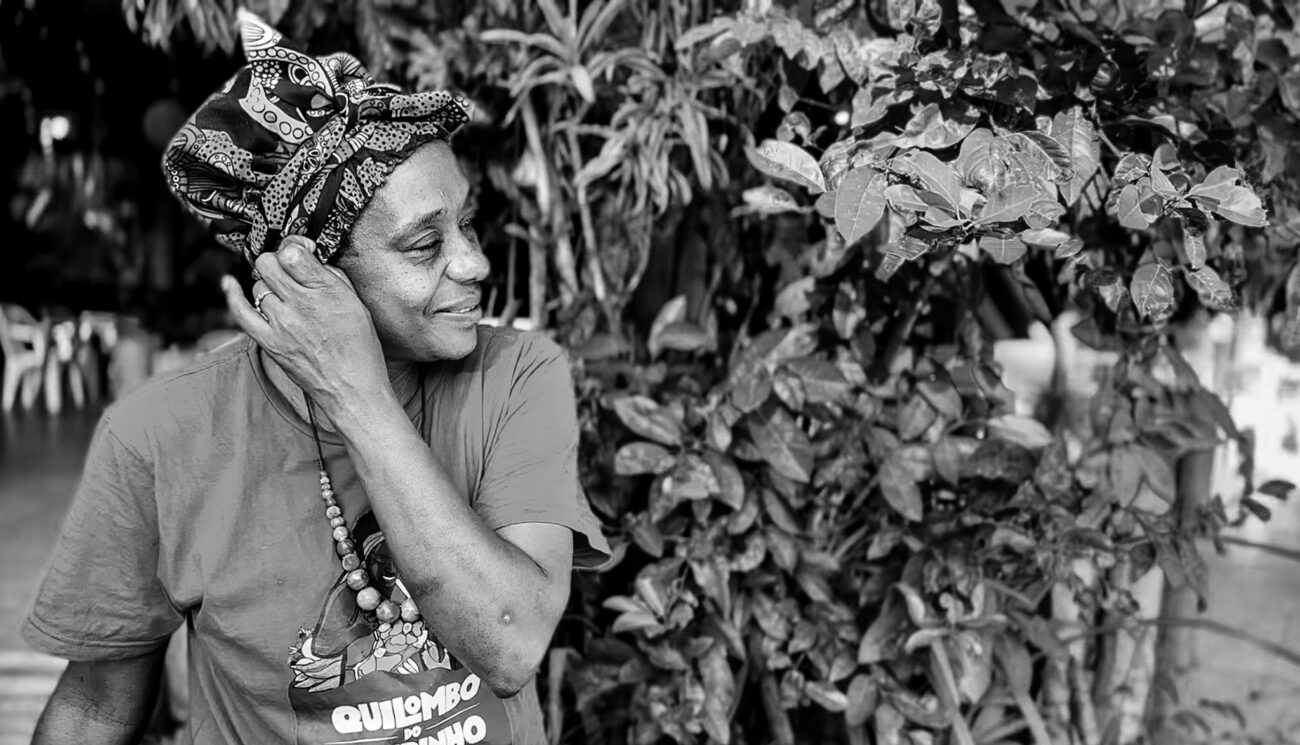
I am quilombola, born and raised here in the territory of Campinho da Independência. I am the 5th generation of the three women.” This is how Daniele Elias Santos, mother, jongueira, and farmer, introduces herself. The three women Daniele refers to are Antonica, Marcelina, and Luiza. Two sisters and a cousin who were enslaved in the 19th century, still girls, at what was then the Fazenda da Independência. After the land was abandoned by the landowners, the enslaved people were also left behind, and the three women founded what is now the Quilombo Campinho da Independência, located in the municipality of Paraty, RJ.
As a legacy for the community, they left not only the matriarchal structure but also the direct descendants: all 14 family units are from the lineage of one of the three pioneers. Around 700 people currently live in the territory. Dani, as she is known in Campinho, is from the 5th generation, and she is the first woman to preside over the Quilombo Residents Association, AMOQC.
The territory lies in the midst of a fascinating and preserved Atlantic Forest, which is now crossed by the Rio-Santos highway (BR-101). The opening of the road in the 1970s marked the community’s collective memory as the time of greatest fear and violence. It was against land speculation, land grabs by illegal squatters, and other threats that accompanied the road project that the community began mobilizing for recognition of their ancestral right to the land. After 30 years of resistance, in 1999, Campinho became the first quilombo officially titled in the state of Rio de Janeiro and one of the first in the country.
The structural sexism in our society remains an issue to be faced within the community as well. However, with every story told, the protagonism of women throughout the generations is undeniable, even if it sometimes makes people uncomfortable. Each account presents affectionate, sometimes even feared, but always respectful references to a grandmother, an aunt, a teacher, a midwife. Ana Claudia, a jongueira master from the community, says with a laugh: “We don’t even want to lead, but it’s in the genetics.”
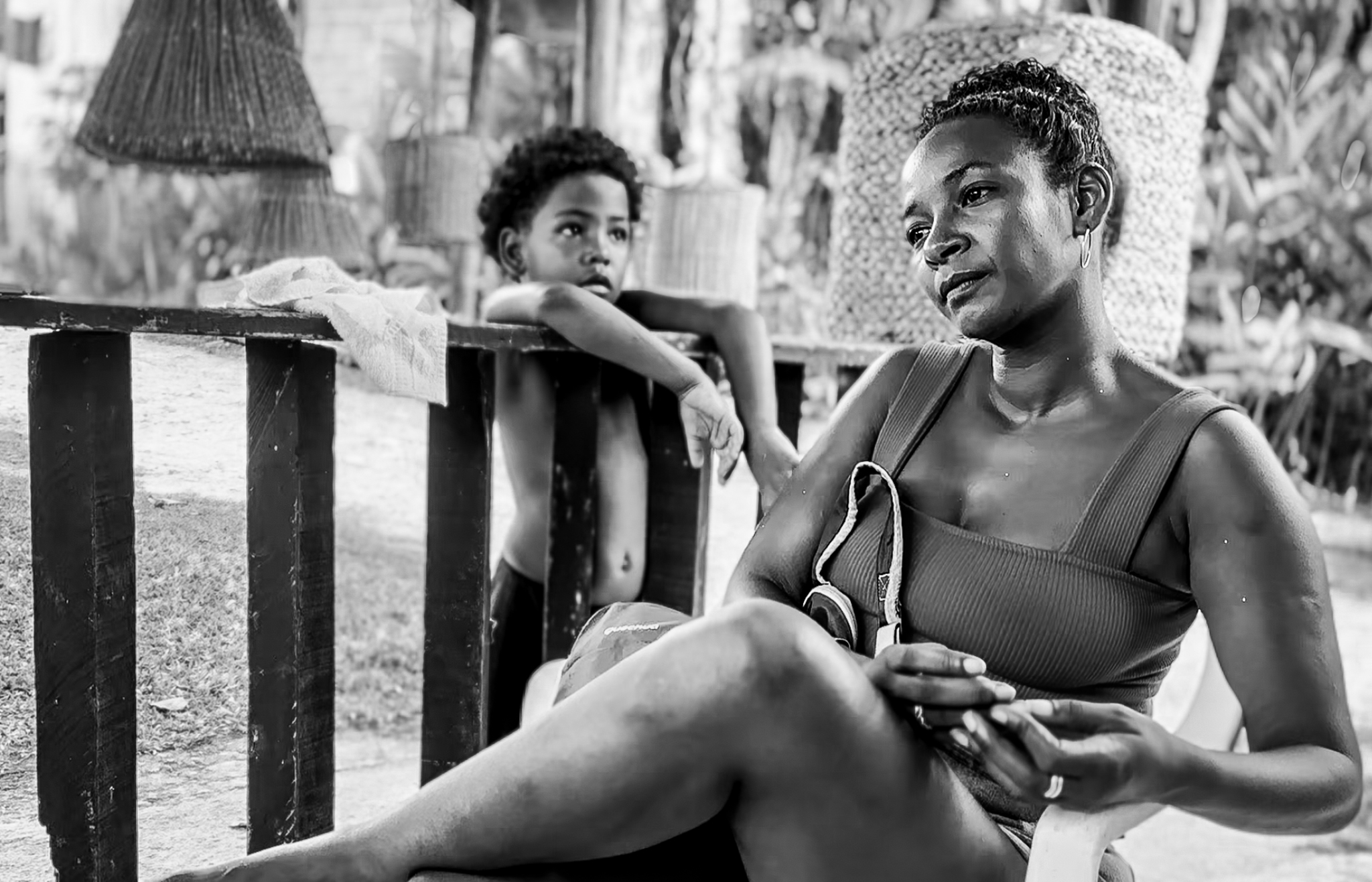
Daniele, 37
—President of AMOQC, mother, jongueira, farmer | 5th generation of the 3 women
“We live collectively, right? It’s a difference that is sometimes hard to explain. If you’re Black, let’s say, but you’re not quilombola. You can live in the city, you can live in the countryside, but you’re independent. Your choices, your way of life, your way of thinking. They are yours.
I am quilombola. I came from here, I have a territory. I have an ancestral people who were born before me. So I was born with a mission. I didn’t understand that before. I was born and raised here, but when I was 21, I settled here in the quilombo and thought, ‘Wow, I’m not here for nothing?!’
We used to play in the yard, ‘Ah, everything the master says, we’ll do it all,’ right? ‘So go get a branch of aroeira from somewhere’ or ‘Go get a branch of pitanga.’ Even play was already bringing the knowledge of the territory, of the yard. It wasn’t random. Today, when I look back, I think, ‘Wow, we used to play games that made a lot of sense.’ It was ancestral knowledge.”
THE PIONEERS
“We know that many of our ancestors didn’t have this opportunity, right? They were killed, thrown into the sea. But they came. They arrived from Africa very young, around ten or twelve years old. They were enslaved, lived through horrors, until the landowners abandoned the land and left. Then, they had the opportunity to tell their own story. And instead of staying like, ‘I’m screwed, what am I going to do here?’ They said, ‘No. Now the real story begins!’
I think we inherit this here. In our bodies. I feel it deeply. Because if I think about it, has any leadership emerged from my family? No. Where does this come from? Of course, the community organization here in the quilombo is very strong. It’s a fight to preserve this memory, this ancestry. But I’m sure there’s something deep inside me that comes from the three women.”
SEXISM
“The world is very sexist, right? Sexism rules. But they’re having to swallow us, because women are here, doing it. It’s very challenging. But they don’t have much left to run from. Now, is sexism still here? It’s here. Do we feel it? We do. But we don’t care about it either.
When we enter spaces with our heads held high and say what needs to be said, it’s as if it’s an offense, an arrogance. And then you start to see the looks. Those who love us, love us, but those who hate us, really hate us. Because it’s a Black woman discussing important issues, and they can’t understand it. The men and the white people. Now, the white men, they really can’t understand!
Society is sexist, so it’s also hard for people to see me as the president of the association, even here within the community. People sometimes don’t respect it as much, you know? It’s still a surprise. Because the woman is there at the restaurant, the woman is there at the craft house. But a woman leading politics, I know it’s still a shock for people. But I have a lot of women around me who hold everything together!
I ask for a lot of wisdom and protection, right? Our ancestors, our orixás, our guides, our mentors. I am my father’s only daughter, and he’s terrified of me being at the forefront of these struggles. The issue that kills the most in Brazil is the territorial issue. There’s a lot of pressure. We lost Mãe Bernadete, we lost Marielle. But we will continue the fight. There’s no running away from it, right?”
TERRITORY
“Here, they lived peacefully and happily until the 1970s. Planting, fishing, making flour, celebrating their parties, their way of life, in harmony with nature. Then came the Rio-Santos highway, and it split the community in half. We are between the country’s two largest metropolises, Rio and São Paulo. A unique, incredible coastal axis. With the Atlantic Forest very well preserved, because our people preserved it. This highway cuts the community in half and exposes us to everything that passes through here. The construction of the road brings a huge impact on the people’s way of life, and also a very large economic pressure.
So, a struggle begins to get documentation to prove that this territory was ours. Even though we were born and raised here, we had to prove that this territory was ours. Imagine! Many men had to leave to work on large fishing vessels in Rio. Others went to Santos on foot, for eight days, to earn money and pay a lawyer to fight for the land.
While they were away, working for the title, it was the women who were sustaining the territory. It was the women who took care of the children, who took care of the animals, who took care of the crops, who took care of the territory, who took care of the farm, the women. After nearly 30 years of struggle, Campinho became the first quilombo officially titled in the state of Rio de Janeiro.”
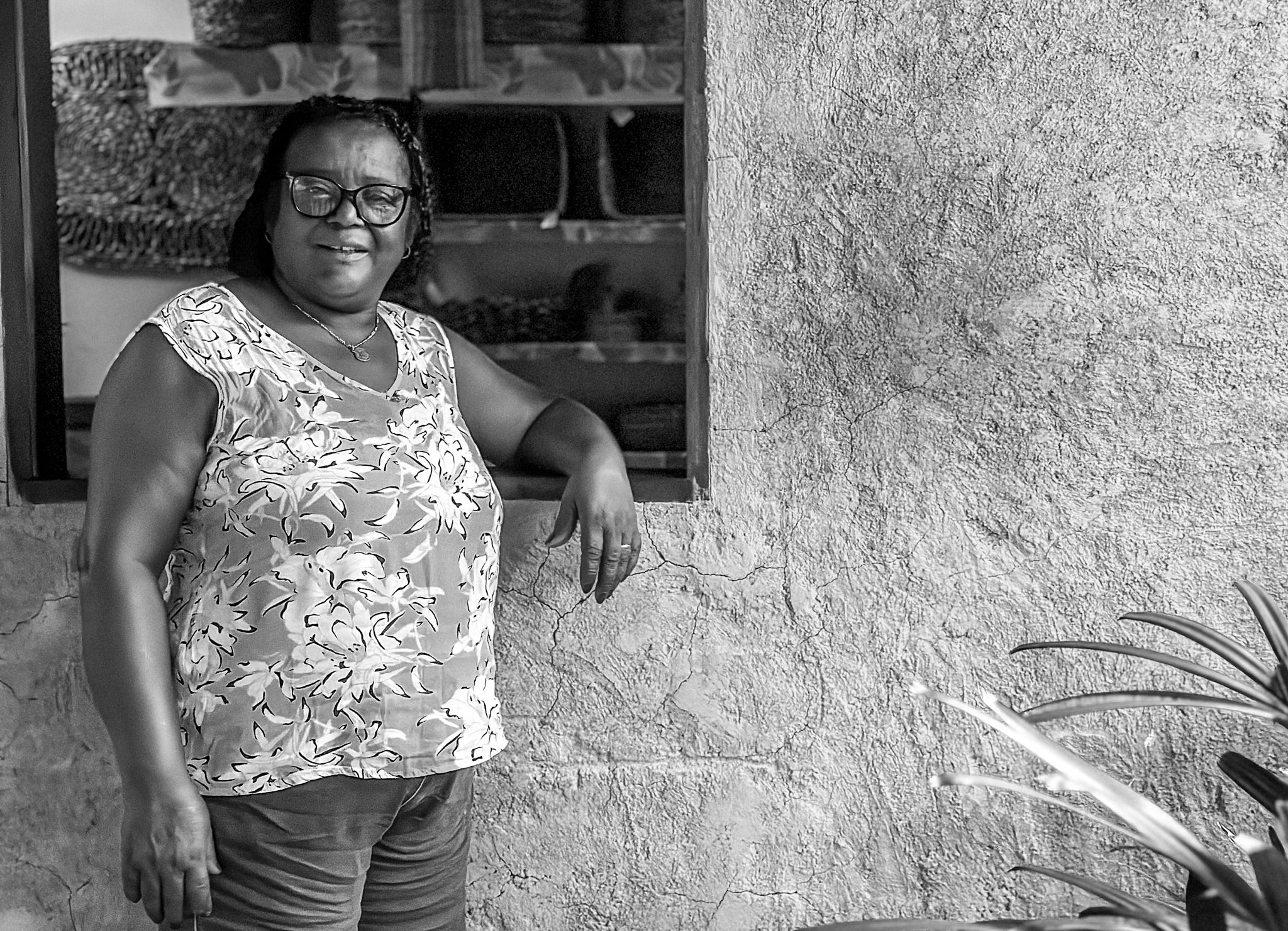
Dilma, 69
—Craftswoman | 4th generation of the 3 women
“People said that we were going to have to leave the land. We didn’t know where we would go. Maybe Ilha das Cobras, but back then it was all mangrove. My father suffered a lot. The older ones, right? They suffered a lot because of this. Us, being younger, I was around 12 or 13 years old, we didn’t really understand it.
They had to leave to work in Santos. Cut bananas, sell them, to do a land claim. Pay for us to have ownership of the land where we were born. And then my mother stayed home working on the farm, and we helped. I had to do the house chores so my mother could work on the farm.
A man would come, saying he was the son of the landowner, put up a sign: ‘Private property.’ Our elders would tell us, ‘When they put up the sign, you go and take it down!’ We would go there and pull it down. Take those signs, throw them away, take them home, and burn them. They would put them up again, and we would take them down. Knowing that today we’re at peace. It was an achievement, right? It was the achievement of the land titling.”
ATTENDING TO MOTHERS
“We needed people from the community to work in healthcare, right? To be community health agents. Out of all those people, they chose me. Then I started to enjoy the work.
I wanted to do the hardest part, you know? I wanted to stick my nose in places I wasn’t called. So, when there was a delivery at the maternity ward, I wanted to be there. I wanted to be helping the mothers, you know? I couldn’t stand hearing anyone scream without rushing to help. People started trusting me more, you know? When she was pregnant, she would say, ‘Dilma, I’m going to call you!’ And it just kept going, it became a regular thing!”
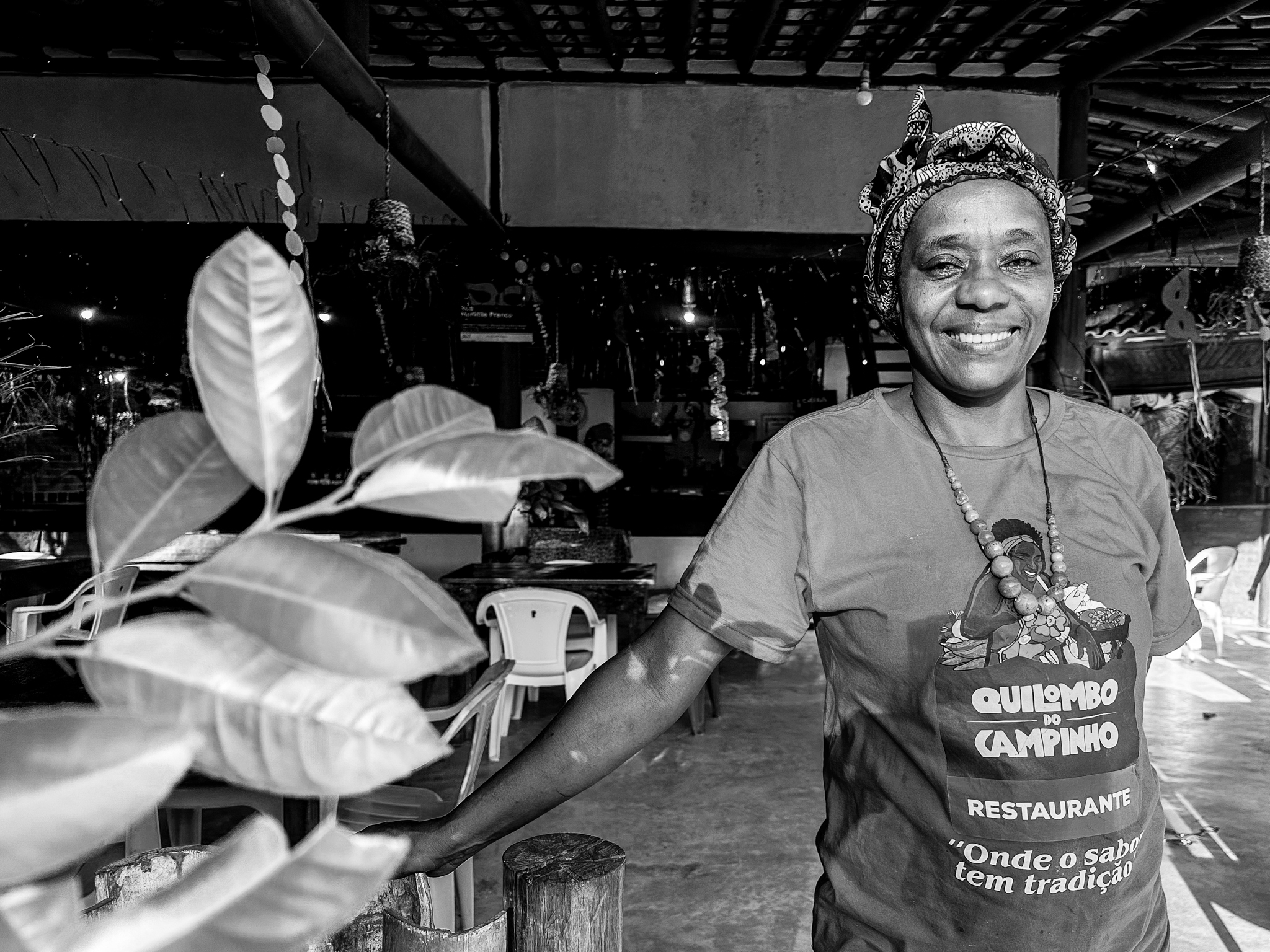
Cirlene, 48
—Farmer | 5th generation of the three women
“I was born in the community itself. I wasn’t even born in Paraty, in the hospital, I was born right here in the community. It was a home birth, right? The midwife from the community helped. My mother always worked as a school cook here in Campinho. She said she worked all day at school that day, and suddenly, she felt that pain, right? So today I have three godmothers. I have the midwife, the one who baptized me, and another one.”
THE FARM
“Before, I would go to the farm to take food to my father and my brothers, right? They were men. We, as women, stayed more at home. Today, it’s different. Nowadays, it’s the women who are going to the farm. Women don’t have that limitation anymore, you know? A woman goes to the farm even more than her husband sometimes. Or they go together a lot, too. I, for example, with my husband, we always go together. So I’m at the farm almost every day.
I love the farm, working on the farm. I really love working with the garden. Being there every day, working with flowers. It’s a passion in my life, working with flowers. My garden is full of flowers. Full of everything you can imagine, but the flowers must always be there in the middle too.”
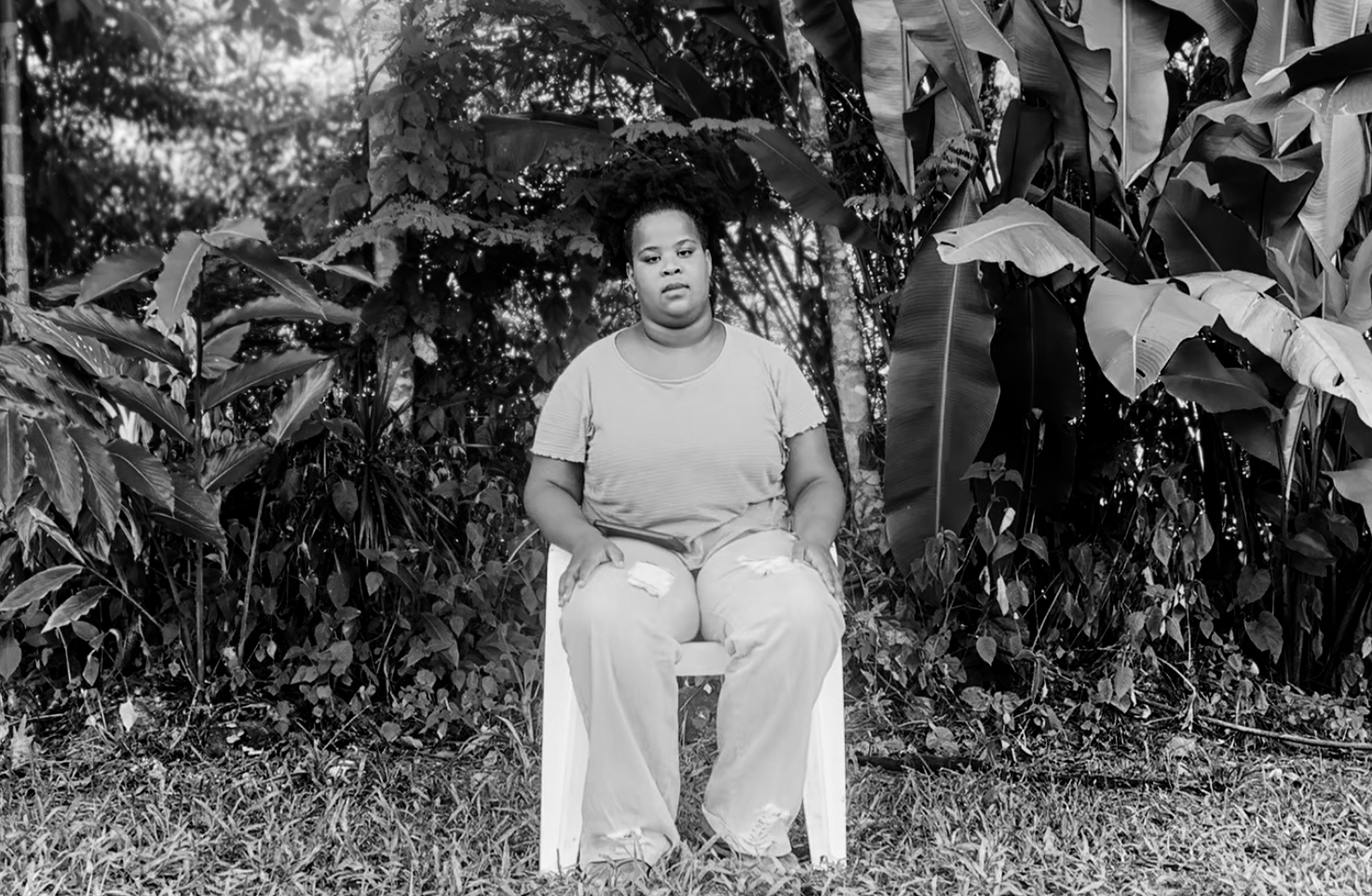
Geovana, 18
—Student | 6th generation of the three women
“For me (studying in the city) wasn’t good. I didn’t like it. Because here, everyone is friends with everyone, it’s close to home. We would go out, go to Rio, do several things. Back in my time, there wasn’t yet a differentiated education, but in a way, it was already differentiated. We studied what we had here in the community. Outside, they don’t have that, and they try to put something else in our heads, which we know is a lie.
Differentiated education is learning with the history of your community, with the things you have in your community, and the older women too. You learn from people in your community, in the experiences of the older women as well. It’s much better, a thousand times better than learning from a book that teaches you a story that has nothing to do with the real history.”
When you grow up and go out into the world, you have to face a lot of things that didn’t exist in your mind. Everyone fights against racism. But here, it’s different. We know it, but we don’t live it at school, here inside. Outside, we will have teachers who will coddle a student who is being extremely racist. In my class, there weren’t even Black people! In my school, in the two I attended, I was the only Black person in the classroom. And in college, it’s just me and one other person.”
FUTURE
“I really wanted to leave when I was younger, but today I don’t see myself far from here. I see myself as a future Dani, for example, or a Laura. We see them a lot as the masters, right? I think most of them are women. And they take care of everything here. We don’t see many men. And my grandmother used to say this a long time ago, that it was like that. It’s always been the women who were in charge of everything.”
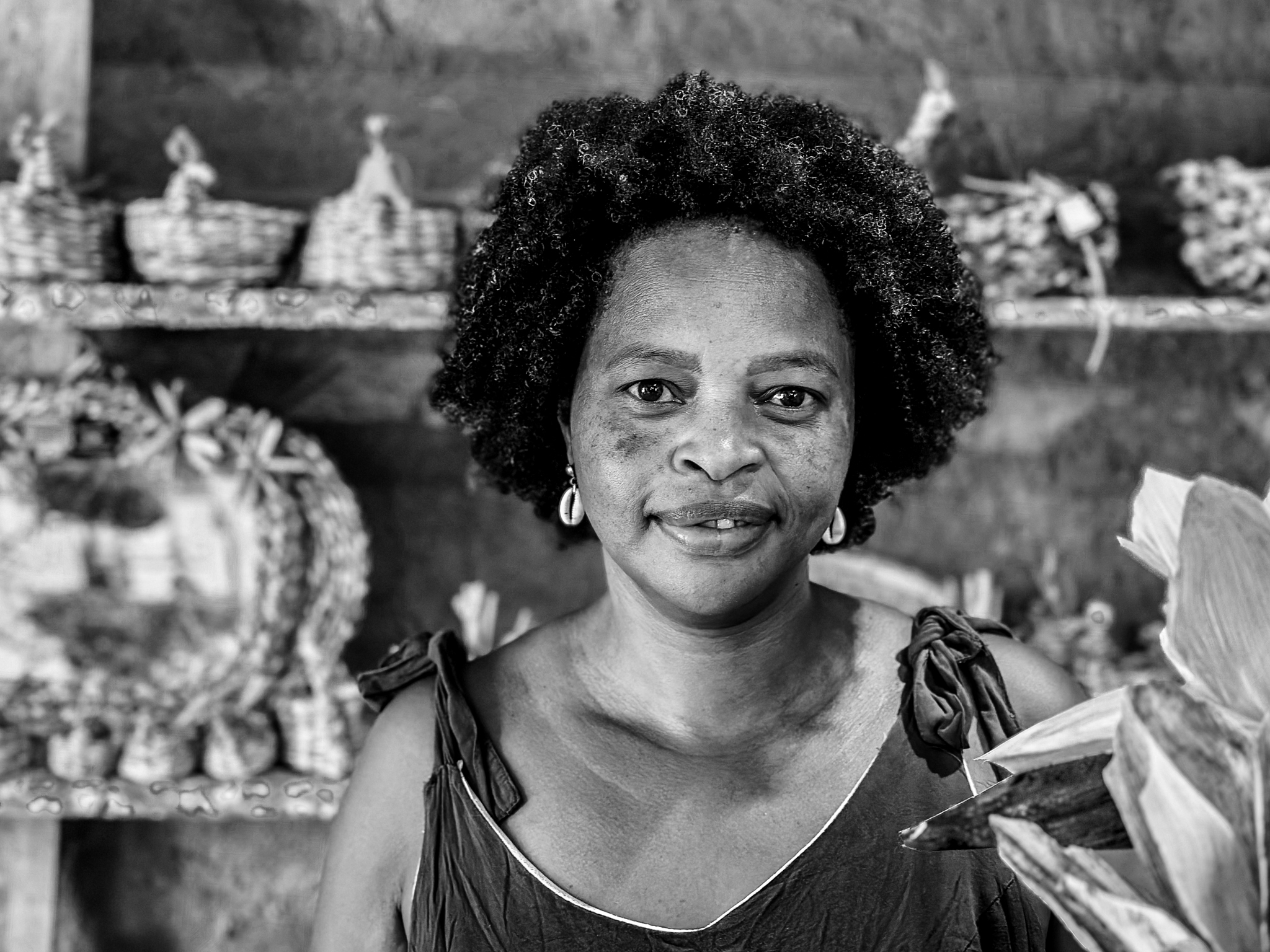
Ana Cláudia, 48
—Jongo Master, Craftswoman, Farmer | 5th generation of the three women
“I am the aunt of everyone. I didn’t want to be an aunt, but everyone calls me aunt. I say: ‘Alright. I bless you.’ ‘Bless you, aunt?’, ‘I bless you.’ Because that’s how I learned, that’s how I was raised. Someone always blessed me. Even when I misbehaved, I was blessed. So, it’s a bond of love, right? A bond of caring, of teaching. I learned in this way and raised others in this way.”
“We don’t even want to lead, but it’s in our genetics. If there’s a little opening for us to give a hint, a suggestion, we naturally go for it. And the people who want that listening, or even those who don’t want it, they listen. ‘Cadinha has a little bit of experience. I’ll follow this path.’ And later, they thank us.”
JONGO
“In fact, jongo here for our community is a flag of struggle. It’s a moment where we want to honor our ancestors, those who left this legacy for us. It’s also a form of resistance, to self-affirm our ancestral knowledge, right, through dance. It’s an educational space.”
“In the past, the jongo circle was used as a way to communicate. For those defenses we needed on the slave plantation. The enslaved people couldn’t communicate with each other, right? There was no communication, only labor, work, and sleep. So there was this movement on the plantations, with jongo, to have communication between the enslaved. Within the coded points, which are the songs, we would say what we wanted to communicate to defend our people, right? A strategy of struggle that we found.”
“And with all this knowledge, nowadays we use this tool for what? For the youth. To self-affirm. I’m quilombola, I’m Black. I’m Black, right? Afro hair. I can be a jongueira, a craftswoman, I can be whatever I want to be. It’s all about belonging. And when there’s belonging, you don’t need to call for it, to search for it. The youth understands what this flag of struggle is. They come with a smile on their face. They come eager to dance jongo, to compose.”
TIME OF LISTENING
“We have a perception as people from the community. We live here, yes, on 297 hectares of land. But we don’t just think about ourselves within these hectares of land. We think globally, as part of the world. Communities like ours can make an impact on educating the world, the planet. We wouldn’t be living through the collapse, the environmental change. Global warming, right? It would be so different. Since the world began, the elders used to say: ‘Wait a minute! There, you need respect. There, don’t touch. Don’t touch!’.”
“Living on a territory like ours, or living in a city… It’s really very different, right? That’s the role of listening. The time of listening, you know? The time of having coffee at the table with an elder. The time of having tea at the table with an elder. I know the outside city. The neighbors there don’t even know each other! Everyone is focused on their own individual life. They don’t care about the individual life of the other, right? That’s it, the time of listening.”
Report and Photos by Yamini Benites






